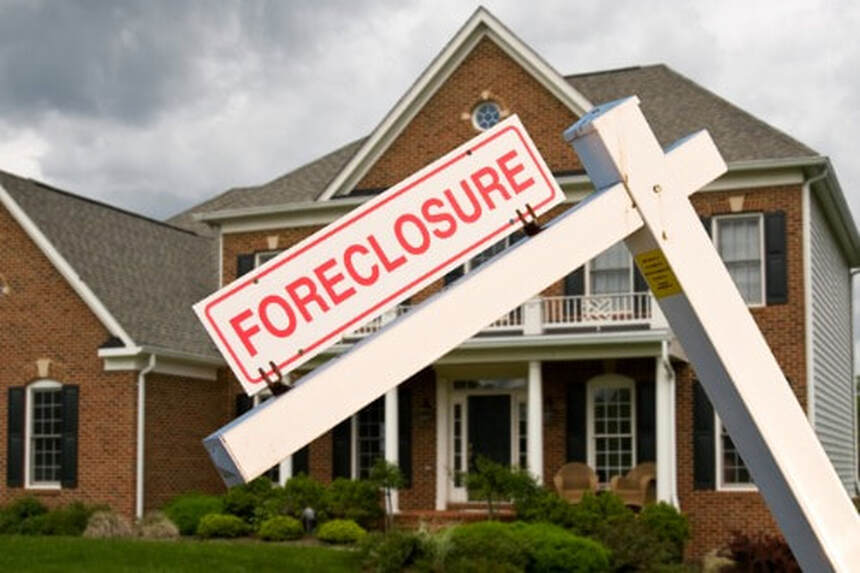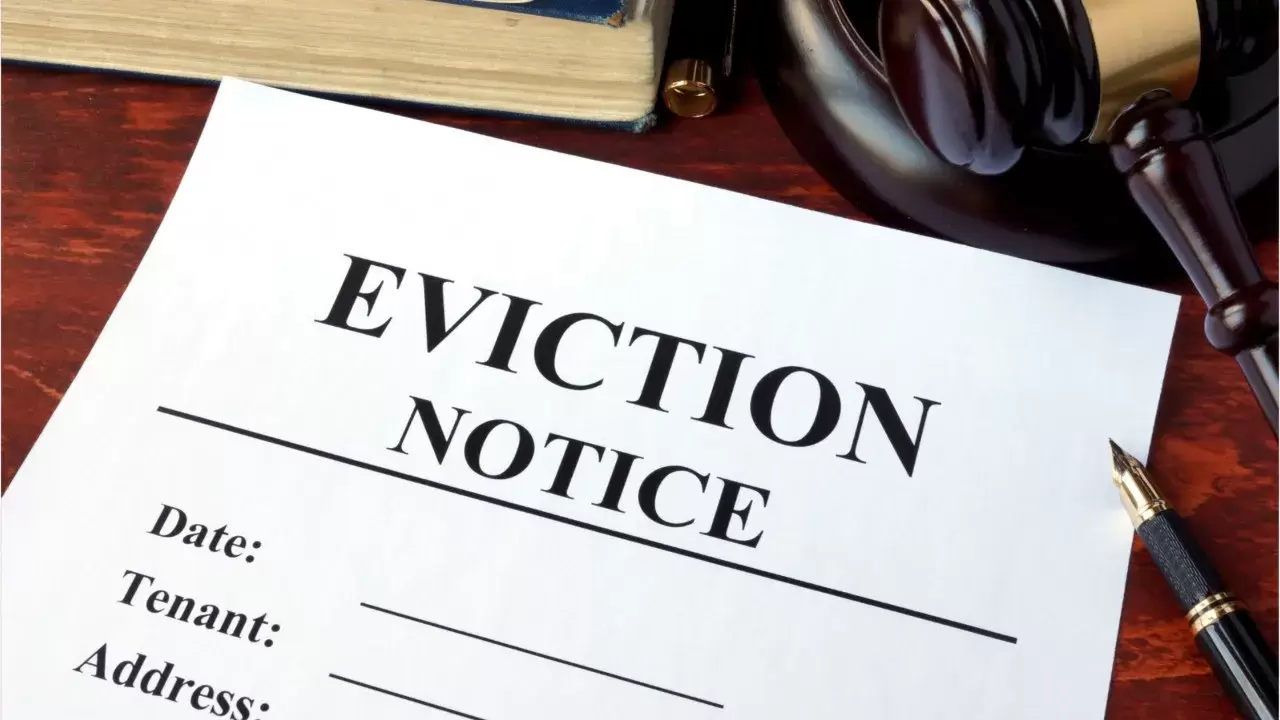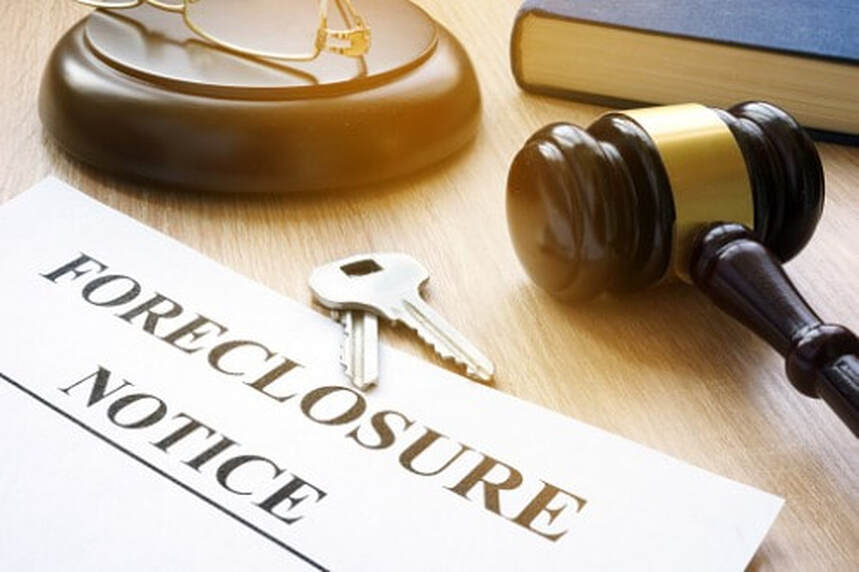|
While house price appreciation has been the focus for many looking at the buy side of the housing market, other observers have placed some hope in that appreciation, noting that as demand for housing increases underlying home equity is growing. The two terms, house price appreciation and home equity growth, are essentially the same thing looked at from a buyer’s and a seller’s viewpoint respectively. From the seller’s view, many observers are saying that the opportunity to make a huge profit on a home by listing now should help bring existing homes on to the market, thereby cooling it somewhat. According to the real house price index recently released by title insurance provider First American, however, that may not actually be the case.
First American’s chief economist Mark Fleming (pictured above) and deputy chief economist Odeta Kushi (pictured below), both explained how the confluence of a recent refi boom, the cut-throat nature of the housing market, and the rise in rates through February and March have conspired to lock existing homeowners in their properties more rapidly than we might otherwise expect. They explained how a relatively simple mechanism is keeping homeowners from listing now. “The rapid pace of annual nominal house price appreciation, just over 14% in February, begs the question: isn’t rapid house price growth good news for existing homeowners looking to move? According to a behavioral economic theory dubbed ‘the wealth effect,’ homeowners are more likely to move if they feel ‘wealthier’ because the value of their home rises,” Fleming said. “Yet, that homeowner would be entering the housing market at a time when all the other homes in the area have likely appreciated by the same amount. While the homeowner’s equity gains boost wealth, the equity gains allow the homeowner to keep pace with the housing market, rather than outpace it. So, if feeling wealthier doesn’t actually help buy, what can incentivize a homeowner to sell? Falling mortgage rates.” Rates are absolutely key to First American’s outlook, even though rising rates through February impacted affordability. Kushi noted that if you measure affordability by a calculation of rate and nominal house price, homes are still more affordable now than they were this time last year. Another factor keeping existing homeowners in their homes, though, is the lingering impact of 2020’s refi boom. When rates dropped to 2.5% for 30-year fixed mortgages, just about everybody who could refinanced their homes. As rates have risen somewhat, a new mortgage on a new home will cost that homeowner more per month than they’re currently paying. Moreover, the refinance itself was so recent that many borrowers haven’t yet recouped the closing costs and fees in the form of monthly savings. While existing homeowners aren’t moving, despite house price appreciation, Kushi explained that it’s first-time homebuyers who are struggling as a result. “About two-thirds of all home buyers are existing homeowners,” Kushi said. “In other words, most buyers are sellers first. If existing homeowners are staying put, that limits the available inventory of homes for sale for potential first-time home buyers, because you can’t buy what’s not for sale.” One factor that could help incentivize some homeowners to list is a move to a different market. Kushi noted that moving out and up to a more affordable market is a way a homeowner can circumvent the ‘wealth effect.’ In doing so, they may open up a bit more stock in tighter areas. In the face of these factors, Kushi and Fleming believe that mortgage professionals should continue operating as they have, expecting extreme competition and tough client conversations. “Mortgage professionals should be aware that the housing market will likely remain a fiercely competitive sellers’ market in the near term,” Kushi said. “Buyers will have to move very fast to keep up with market velocity. Potential home buyers should have a good understanding of their house-buying power and what they’re willing to spend on a home that suits their needs.”
0 Comments
Sales of previously occupied US homes fell for the second consecutive month in March because there are so few on the market, and the fierce competition for those that do exist is pushing prices to new highs.
Existing home sales fell 3.7% last month from February to a seasonally adjusted rate of 6.01 million annualized units, the National Association of Realtors said Thursday. Sales jumped 12.3% from March last year. Homes typically sold in 18 days last month, a record low. It’s less than the 20 days in February, and much faster than the average of 29 days last year at this time. Sales are slowing despite the speed at which buyers are pouncing on homes that do hit the market, revealing surging demand in an ultra-low inventory environment, said Lawrence Yun, NAR’s chief economist. “It’s simply a severe lack of supply that is holding back sales,” Yun said. The inventory of unsold homes stood at just 1.07 million at the end of March, only a slight improvement over the record-low 1.03 million homes in February. And it’s tumbled 28.2% from levels just a year earlier. At the current sales pace, the March inventory of homes for sale amounts to a 2.1 months’ supply, well short of the six-month supply economists say is needed for a balanced market. In February, the supply was slightly lower at 2 months. In March last year, it stood at 3.3 months, the NAR said. The newest housing data will be of no comfort to house hunters across the US who are facing perhaps the most competitive market in decades. Any house that is put up for sale typically receives multiple, above-asking-price bids, which pushes prices overall even higher - a trend that continued in March. The US median home price surged 17.2% from a year earlier to $329,100, an all-time high. Low mortgage rates remain a lure, providing stretched buyers with a measure of financial flexibility. Mortgage rates fell for a third straight week, with the benchmark 30-year home-loan rate slipping below 3% this week to 2.97%, according to mortgage buyer Freddie Mac. At this time last year, the long-term rate was 3.3%. Every region in the country suffered sales declines last month, a complete reversal of sales in March 2020. Foreclosure activity increased over the first quarter of 2021, despite a nationwide pause on foreclosures for homes with government-backed mortgages.
Figures from ATTOM Data Solutions revealed that there was a total of 33,699 properties across the US with foreclosure filings (default notices, scheduled auctions or bank repossessions) during the first quarter of 2021, up 9% from the previous quarter but down 78% from a year ago. The report also showed a total of 11,880 properties with foreclosure filings in March 2021, up 5% from the previous month but down 75% from March 2020 — the second consecutive month with month-over-month increases in US foreclosure activity. Foreclosure activity picked up despite the Biden administration announcing an extension of a moratorium on foreclosures through June 30. However, Rick Sharga, executive vice president of analytics firm RealtyTrac, said foreclosure actions on two property types could have caused the increase. “The foreclosure moratorium on government-backed loans has virtually stopped foreclosure activity over the past year,” said Sharga. “But mortgage servicers have been able to begin foreclosure actions on vacant and abandoned properties, which benefits neighborhoods and communities. It’s likely that these foreclosures are causing the slight uptick we’ve seen over the past few months.” The number of mortgage applications fell for the sixth consecutive week, according to new data from the Mortgage Bankers Association (MBA).
Figures from MBA revealed that the total number of mortgage applications decreased 3.7% for the week ending April 09, on a seasonally adjusted basis, compared to the week prior. Refinancing activity also decreased last week, dropping 5% from the previous week, while the seasonally adjusted purchase index decreased 1% week-over-week. Joel Kan, associate vice president of economic and industry forecasting at MBA, said that the decrease could be attributed to rising rates and a tighter supply of homes. “Purchase and refinance applications declined, with most of the pullback coming earlier in the week when rates were higher,” said Kan. “Refinance activity has now decreased for nine of the past 10 weeks, as rates have gone from 2.92% to 3.27% over the same period. Last week’s index level was the lowest in over a year, as mortgage rates continue to trend higher. Many borrowers have either already refinanced at lower rates or are unwilling – or unable – to refinance at current rates.” Additionally, Kan said that declining purchase activity is “a sign that rising home prices and tight supply are constraining home sales – especially in the lower price tiers.” “Purchase applications were still above last year’s pandemic-impacted low point, but fell behind the level of activity seen the same week in 2019,” concluded Kan. While forbearance numbers have declined somewhat in recent weeks, around three million homeowners are still behind on their mortgages. As foreclosure moratoriums are set to expire later this year, the housing market is now facing the risk of a shock from millions of homeowners going from forbearance straight into foreclosure. To prevent such a shock to the system, the CFPB has released a proposed set of rule changes for servicers and borrowers to prevent the end of forbearance turning into a catastrophe for the whole mortgage industry.
The CFPB’s proposed rules include giving borrowers more time through a pre-foreclosure “review period” that would keep servicers from foreclosing before 2022, as well as giving servicers more options for streamlined loan modifications for borrowers impacted by the pandemic and making some changes to required servicer communications, ensuring borrowers receive key information about options in a timely manner. While the CFPB has sought input on these rule changes, one analyst believes they’re effectively a fait accomplit, with significant impacts on the whole mortgage industry and housing market. “Foreclosure represents a bigger risk than we all realize,” said Jane Mason (pictured), founder and CEO of process automation software firm CLARIFIRE and an expert in loss mitigation. “We need to be thinking about underreported data - delinquency numbers aren’t being reported to credit agencies and we’re not sure how delinquent these people are. After 18 months, they’ve been in delinquency for a considerable amount of time. Converting these people to permanent solutions is going to be a big challenge. I don’t think the risk is nearly as big as during the great recession, but I do think the servicers and banks in particular need to pay attention to how they are going to manage the volumes and velocity of these requests.” Loan application modifications proposed by the CFPB, Mason said, could be particularly effective in developing permanent solutions for delinquent borrowers. Servicers being allowed to accept incomplete applications will take a major burden off servicers and borrowers as both groups can struggle with the sheer quantity of documentation required for all the options they might be eligible for. While these changes are directly impacting the servicing side of the mortgage equation, Mason believes there’s likely to be impacts in the key handoff between origination and servicing. As originators increasingly encounter borrowers with underreported delinquencies, blemished credit, and significant income volatility, the underwriting credits on these mortgages will become more challenging. Originators, she claims, will have to pay far more attention to the growing underwriting risk associated with people trying to get out of delinquency using a refinance as a permanent solution. They will have to take a close look at credit and ask themselves what you do when somebody has had no credit for a year. She believes that to get ready for these looming changes, mortgage professionals need to be communicating with their borrowers en masse, sending surveys and collecting information about how they are doing and their plans for getting back on their feet. It’s important, she believes, to ask if these borrowers know what the end of forbearance is going to mean for them. Servicers need to get their operational side on board, too, and make a full push to turn these communications into meaningful actions now that can safeguard the borrower and the mortgage. As these CFPB rule changes are finalized, the whole team needs to be ready to implement them and prevent forbearance from becoming another foreclosure crisis. “We have to make sure that our team members, the people working in the servicing shop, not only have a basic familiarity with the policy changes, but they have to be in communication with the borrowers,” Mason said. “I think that’s another place where they can actually assist their operations and assist the borrowers at the same time.” With judges ruling against a federal eviction ban, pressure mounts on the Biden administration to distribute billions in aid to renters. The Biden administration again extended a federal moratorium on evictions last week, but conflicting court rulings on whether the ban is legal, plus the difficulty of rolling out nearly $50 billion in federal aid, means the country’s reckoning with its eviction crisis may come sooner than expected. The year-old federal moratorium — which has now been extended through June 30 — has probably kept hundreds of thousands or millions of people from being evicted from their apartments and homes. More than 10 million Americans are behind on rent, according to Moody’s, easily topping the 7 million who lost their homes to foreclosure in the 2008 housing bust. Despite the unprecedented federal effort to protect tenants, landlords have been chipping away at the moratorium in court. Six lawsuits have made their way before federal judges — with three ruling in support of the ban and three calling it illegal. The opposition started when landlords in Texas sued in the fall, arguing that the Centers for Disease Control and Prevention had overstepped its bounds in implementing the ban. Apartment owners argued in their complaint that they built and maintained apartment buildings “with the reasonable expectation that they would be legally permitted to realize the benefit of their bargain by collecting monthly rent from their tenants.” District Judge J. Campbell Barker agreed. “Although the COVID-19 pandemic persists, so does the Constitution,” he wrote. The National Association of Home Builders joined Ohio landlords in another suit. The judge in that case, J. Philip Calabrese, also ruled against the ban, writing March 10 that “the CDC’s orders exceeded the statutory authority Congress gave the agency.” Treasury Department officials have been armed with nearly $50 billion in emergency aid for renters who have fallen behind, and are racing to distribute it through hundreds of state, local and tribal housing agencies, some of which have not created programs yet. The idea is to get the money to renters before courts nationwide begin processing evictions again. “We are running the Emergency Rental Assistance Program every day like we’re going to lose the moratorium tomorrow,” said a Treasury Department official, who spoke on the condition of anonymity to discuss the program before any formal announcements. The moratorium was not overly controversial at first and it has received bipartisan support from lawmakers. It was formed when President Donald Trump and Congress directed the CDC to create a form tenants can use to declare that they cannot pay rent because of the pandemic and that they have been unable to secure other housing. Filing the form generally halts eviction proceedings But that was a year ago, which is a long time to go without collecting rent, especially for landlords who own smaller properties and are increasingly facing debts they cannot pay. This isn’t a concern for the vast majority of owners of high-end apartments catering to professionals, because their tenants can work from home and are far less likely to be unemployed. But it can amount to a financial catastrophe for companies housing low- and moderate-income workers, many of whom were laid off from service and tourism industries and have not been required to pay rent for a year. “Those who have fallen behind in their rent are among the most vulnerable members of society: more likely to be unemployed, with less income and less education,” experts from Moody’s wrote in January. Evictions continue in Virginia despite CDC order extension As months of unpaid rent dragged on, landlords began filing suits nationwide asking judges to strike down the ban. Three have now ruled against it. The rulings in Texas and Ohio did not include injunctions removing the CDC’s ban, and the Justice Department is appealing. Dozens of state and local bans remain in place as well. But days after the Ohio judge’s order came a more concrete ruling against the moratorium, when District Judge Mark Norris in Tennessee ruled that extending the ban had been illegal. He issued an order saying the moratorium was “unenforceable in the Western District of Tennessee.” Advocates say this is the first ruling that may carry severe consequences for thousands of people. More than 19 percent of renters in Tennessee are behind on rent, according to Moody’s. Norris’s district includes Memphis, where landlords have filed more than 13,000 eviction notices in the past year, according to Princeton University’s Eviction Lab. Memphis may be a test case for what the impact will be when the moratorium expires nationwide with eviction filings piled up in courts. “Tenants in Western Tennessee are at immediate risk,” said Diane Yentel, president and chief executive of the National Low Income Housing Coalition. Although the CDC ban remains in place, and other judges have upheld it, for Justice Department lawyers, it looks like an increasingly difficult game of whack-a-mole, with each adverse ruling chipping away at the moratorium’s protections. The National Association of Home Builders now argues that the CDC ban should not apply to any of its 1,700 or so members, some of whom own thousands of units. Tenants are already increasingly subject to the rules of their local jurisdictions, as some have halted eviction proceedings altogether while others allow landlords to file eviction papers or to complete evictions for reasons unrelated to the coronavirus pandemic. Landlords also are instituting very different policies from one another, as some are aggressively filing eviction notices against tenants even where local courts are not processing cases, said Jim Baker, an advocate. His group, the Private Equity Stakeholder Project, has reviewed thousands of eviction filings nationwide. “We have seen dramatically different polices from different landlords,” Baker said. He said some appear to be targeting apartment communities predominantly populated by racial minorities, a disparity the Eviction Lab documented. Baker also found a motion filed as part of an eviction case in Florida in which a landlord’s attorney cited a decision in West Texas, arguing that the CDC ban had been deemed “an unconstitutional overreach into the general police power retained by the states,” even though it did not include an injunction. Banning evictions is not the only strategy for preventing them. Some states and municipalities have provided subsidies to renters who have fallen behind, to prevent them from being evicted. These policies carry an additional benefit by putting money in landlords’ pockets, keeping smaller companies solvent and ideally making all landlords less eager to evict tenants. Bankruptcy filings among real estate companies have significantly increased over previous years. So tenants’ advocates and apartment company lobbyists alike celebrated when the federal government approved about $46.5 billion in emergency rental aid to be distributed to renters and landlords through hundreds of state, local and tribal housing agencies and organizations. But quickly and efficiently disbursing so much money is no straightforward task. Yentel said recently that only about half the states have created a program to do so. Some landlords have begun saying they won’t accept the money out of concern that too many strings are attached. The Treasury Department has not yet released data on the emergency rental aid program, one of a number of stimulus initiatives deploying unprecedented sums of money. The U.S. government approved trillions in aid. Many hard-hit families have yet to receive it. “I see progress and that is heartening, but that doesn’t get us to take our feet off the gas,” said the treasury official. Part of the effort is to assure landlords that they should participate in the program, regardless of how they feel about the moratorium, so they can collect unpaid rent. Landlords should also benefit from payments renters make after receiving money from Congress’s $1.9 trillion stimulus package. “Are there landlords that don’t want to take the money? I am sure there are. But we are really working hard to build that confidence among landlords so that they confidently come in and participate in this program,” the official added. If the money gets to the tenants and landlords who need it before the ban ends, the onslaught of evictions may be avoided. But given the legal rulings so far, no one can say when the ban will end. Annual home price appreciation remained on fire in February, rising to its highest level in more than 15 years.
Nationwide, home prices grew at a record year-over-year rate of 11.6% in February, according to Black Knight. Moreover, daily home sales data by the company’s Collateral Analytics group showed an annual 15.9% jump in the median single-family sales price. “Multiple years of constrained housing inventory and historically low-interest rates have helped fuel this fire to the point where nearly 75% of the 100 largest US markets have seen annual home price growth of 10% or higher,” said Black Knight data & analytics president Ben Graboske. “What’s more, Collateral Analytics’ Market Conditions Report shows the housing markets in 75% of ZIP codes rated either ‘Strong’ or ‘Hot’ based on underlying market metrics. Only 7% are characterized as ‘Normal.’ The sharp increases in both home prices and interest rates have pushed affordability to its lowest point since mid-2019. Graboske said that it now takes 20% of the median household income to make the monthly payment on an average-priced home – back to the five-year average after several years of low-interest rates mitigating the impact of rising prices on affordability. “Housing is now the least affordable it’s been – factoring in interest rates, home prices and income – since mid-2019,” he said. “Any hopes of 2021 bringing an influx of homes to the market and lessening pressure on prices appear to be dashed for now, as new for-sale listings were down 16% and 21% year-over-year in January and February, respectively.” There are now 125,000 fewer new listings than in the first two months of 2020, driving for-sale inventory 40% below last year’s level. “With higher interest rates and a continuing shortage of inventory, it will be important to keep a careful eye on both home prices and affordability metrics in the coming months,” Graboske said. The Consumer Financial Protection Bureau said Monday it is considering new rules aimed at averting a wave of foreclosures later this year when millions of homeowners are no longer allowed to put off making their mortgage payments.
Last year, the federal government suspended foreclosures and evictions for mortgages insured by the Federal Housing Administration as the coronavirus pandemic left millions of people unemployed. Fannie Mae and Freddie Mac did the same for borrowers in single-family homes with loans backed by the two mortgage buyers. The initiatives offered borrowers relief for up to one year and suspended late charges and penalties. As of February, nearly three million US homeowners were behind on their home loans, with about 2.1 million mortgages in forbearance and at least 90 days late, according to the CFPB. If current trends continue, there still may be 1.7 million such loans by September, the CFPB said. One rule proposed by the agency would prohibit mortgage servicers from starting the foreclosure process before Dec. 31. The CFPB is also considering whether to permit servicers to initiate foreclosures before the end of this year, in certain cases, such as if they’ve made efforts to contact an unresponsive borrower. The CFPB is also weighing a rule that would allow servicers to offer “certain streamlined loan modification options” to borrowers with hardships caused by the pandemic, and changes to ensure servicers are notifying borrowers of their options in a timely basis. The agency is seeking public input on its proposed rule changes through May 11. For the second consecutive month, pending home sales transactions declined in February as homebuyers continued to face the same low-inventory dilemma.
The pending home sales index fell 10.6% from January to a reading of 110.3 in February, according to the National Association of Realtors. Contract signings dwindled 0.5% year over year. An index of 100 is equal to the level of contract activity in 2001. “The demand for a home purchase is widespread, multiple offers are prevalent, and days-on-market are swift, but contracts are not clicking due to record-low inventory,” said NAR chief economist Lawrence Yun. “Only the upper-end market is experiencing more activity because of reasonable supply. Demand, interestingly, does not yet appear to be impacted by recent modest rises in mortgage rates.” Yun expects rates to hover at no more than 3.5% this year. He said that both prospective buyers and current homeowners looking to refinance can still benefit from the relatively low rates. “Potential buyers may have to enlarge their geographic search areas, given the current tight market,” Yun said. “If there were a larger pool of inventory to select from – ideally a five- or a six-month supply – then more buyers would be able to purchase properties at an affordable price.” Each of the four major US regions saw month-over-month declines in February, while results were mixed in the four regions year-over-year. Pending home sales in the Northeast PHSI was down 9.2% to 92.3 in February, a 3.9% drop from last year. The Midwest was down 9.5% to 102.4, a 6.1% decline from a year ago. In the South, sales declined 13% month over month and were up 2.9% year over year to a reading of 133.2 in February. The index in the West declined 7.4% month over month and was up 1.9% year over year to 96.9. Annual US home-price growth remained sky-high in January, soaring 12% year over year, according to the latest Federal Housing Finance Agency House Price Index released Tuesday.
However, house prices nationwide dipped 1% month over month, down from the revised December home-price gain of 1.2%. For the nine census divisions, seasonally adjusted monthly house price changes ranged from -0.2% in the East South Central division to +1.5% in the Mountain division. The 12-month changes ranged from +10.2% in the West South Central division to +14.8% in the Mountain division. “While house prices experienced historic growth rates in 2020 and into the new year, the monthly gains appear to be moderating,” said Lynn Fisher, deputy director of FHFA’s division of research and statistics. “House prices increased by 1.0% in January, which is relatively still high, but represents the smallest month-over-month gain since June 2020.” Echoing Fisher’s sentiments, CoreLogic deputy chief economist Selma Hepp predicted that home price growth will continue to decelerate throughout the year. “While double-digit home price growth has raised concerns about its sustainability, affordability crunch resulting from strong home price growth and higher mortgage rates will discourage some potential homebuyers from entering the market and take some wind out of its sails, slowing the home price growth rate by about a half by the end of 2021,” Hepp said. “The biggest concern remains the lack of for-sale homes. Potential sellers may be discouraged by their inability to find a new home and subsequently choose to not list their own home – leading to a vicious cycle of declining for-sale homes.” |
|
- iMove Chicago
- Real Estate School
-
Laws
-
CRLTO
>
- 5-12-010 Title, Purpose And Scope.
- 5-12-020 Exclusions.
- 5-12-030 Definitions.
- 5-12-040 Tenant Responsibilities.
- 5-12-050 Landlord’s Right Of Access.
- 5-12-060 Remedies For Improper Denial Of Access.
- 5-12-070 Landlord’s Responsibility To Maintain.
- 5-12-080 Security Deposits.
- 5-12-081 Interest Rate On Security Deposits.
- 5-12-082 Interest Rate Notification.
- 5-12-090 Identification Of Owner And Agents.
- 5-12-095 Tenants’ Notification of Foreclosure Action.
- 5-12-100 Notice Of Conditions Affecting Habitability.
- 5-12-110 Tenant Remedies.
- 5-12-120 Subleases.
- 5-12-130 Landlord Remedies.
- 5-12-140 Rental Agreement.
- 5-12-150 Prohibition On Retaliatory Conduct By Landlord.
- 5-12-160 Prohibition On Interruption Of Tenant Occupancy By Landlord.
- 5-12-170 Summary Of Ordinance Attached To Rental Agreement.
- 5-12-180 Attorney’s Fees.
- 5-12-190 Rights And Remedies Under Other Laws.
- 5-12-200 Severability.
- Illinois Eviction Law (Forcible Entry And Detainer)
- Illinois Security Deposit Return Act
-
CRLTO
>
- Today's Cool Thing
- Social Media












